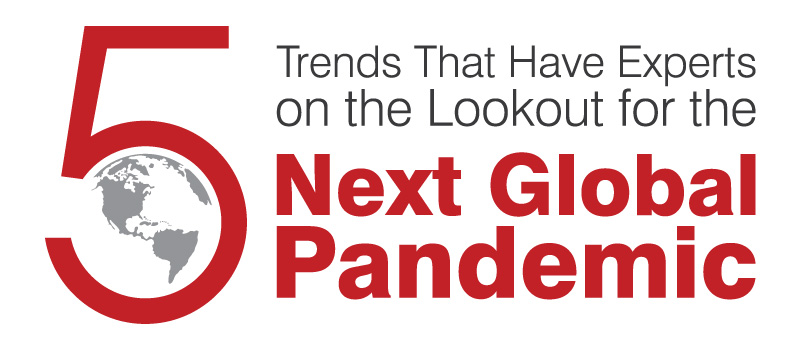5 Trends That Have Experts on the Lookout for the Next Global Pandemic
Andre Johnson

In 2016, 8.5% of the global population was 65 or older. This age group is forecasted to account for nearly 17% (1.6 billion) in the next 33 years.
The National Academies of Sciences, Engineering and Medicine (NAP) suggest that the elderly population is more susceptible to infectious diseases because of their weaker immune systems; highlighting influenza as a potentially serious risk for this cohort.
The UN predicts that 66% of the world’s human inhabitants will all reside in densely populated urban areas by 2050.
Analysts report that the global urbanization trend will continue to strain sanitation systems and increase the spread of communal outbreaks and animal-borne diseases worldwide. The recent discovery of a rare rat-related disease in New York, the fifth most densely populated area in the US, further supports this claim.
There is less than one physician per 1,000 people in more than 75 countries around the world.
A growing number of doctors stationed in underdeveloped nations are choosing to pursue more attractive jobs elsewhere. Consequently, these regions are left without the means to adequately treat patients and contain regional outbreaks before they spread globally. Many experts continue to argue that the rate of infection as seen with the recent Ebola outbreak, was a result of widespread doctor shortages in West Africa.
A 32% reduction in overseas aid and a $4.6 billion reduction in global health and humanitarian spending were proposed for the fiscal 2018 budget by the US presidential administration.
Humanitarian aid experts argue that a reduction in global health spending by the US, a leading contributor in response to global infections and disease outbreaks over the last decade, would drastically hamper the world’s ability to respond to a future pandemic. Furthermore, the Center for Disease Control and Prevention (CDC) is said to be operating with nearly 700 vacancies and has been hit with $580 million in total budget cuts since 2010.
In 2016, international airline travel rose by 6.3% with the US receiving almost 1.2 billion international tourists the year prior.
Experts with the CDC, state that the pace of human mobility has historically contributed to the spread of pathogens and infectious diseases by travelers. These experts argue that the phenomena of microbial hitchhiking via people, belongings, and conveyance, is something that is not likely to be eliminated. The CDC suggests that travelers should better educate themselves on the health and safety risks before traveling abroad.
